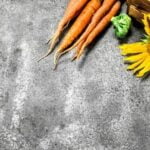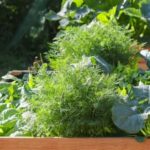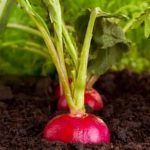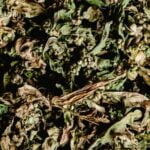Container gardening has become increasingly popular among vegetable cultivators, providing a convenient and versatile option for those with limited space or unfavorable growing conditions. This article will explore the use of two common growing mediums in container gardening – perilite and peat moss – and discuss the advantages and considerations associated with each.
Gone are the days when a large backyard was necessary to grow your own vegetables. With the rise of urban living and an increased focus on sustainable practices, container gardening has emerged as a viable alternative for cultivating fresh produce even in small spaces. Whether you live in an apartment with only a balcony or have limited ground space in your backyard, container gardens offer flexibility and accessibility to vegetable enthusiasts.
One of the key advantages of container gardening is its ability to accommodate various types of vegetables. From leafy greens to root crops, tomatoes to herbs, container gardens provide a platform for growing an abundance of produce.
By using appropriate containers and choosing the right growing medium, gardeners can create favorable conditions for their vegetable plants to thrive. In this article, we will delve into the proper understanding of container gardening principles and discuss how choosing the right growing medium plays a crucial role in ensuring successful vegetable cultivation in containers.
Understanding Container Gardens
Container gardening is a popular and efficient method of growing vegetables, especially for those with limited space or inadequate soil conditions. Understanding the basics of container gardens is essential for successful vegetable cultivation. In this section, we will define container gardening and discuss the various types of containers suitable for vegetable gardening.
Container gardening refers to the practice of growing plants in containers instead of planting them directly into the ground. This method offers numerous benefits, such as flexibility in terms of location, easier maintenance, and better control over soil quality. It also allows gardeners to overcome challenges posed by poor soil conditions or limited access to outdoor space.
When choosing containers for vegetable gardening, it is important to consider several factors. The size of the container should be appropriate for the type of vegetables you wish to grow. For example, small-rooted vegetables like lettuce or herbs can thrive in smaller containers, while larger vegetables like tomatoes or peppers require larger pots with adequate space for root development. Additionally, ensure that the containers have proper drainage holes to prevent waterlogging and promote healthy plant growth.
| Types of Containers | Description |
|---|---|
| Terra cotta pots | Traditional clay pots that allow air circulation and drainage but can dry out quickly in hot weather. |
| Plastic pots | Durable and lightweight but may not allow sufficient breathability for roots. |
| Fabric pots | Flexible and breathable containers that promote healthy root growth while preventing waterlogging. |
Choosing the right type and size of containers is crucial to ensuring optimal growth conditions for your vegetables in a container garden. By understanding the fundamentals of container gardening and selecting suitable containers, you can create a thriving vegetable garden even in limited spaces or challenging soil conditions.
The Importance of Choosing the Right Growing Medium
The growing medium plays a crucial role in the success of container gardening for vegetables. It is essential to choose the right growing medium to provide the necessary support and nutrients for the plants to thrive. In this section, we will emphasize the importance of selecting the appropriate growing medium and explain the differences between traditional soil and alternative options.
In container gardening, the growing medium serves as a substitute for natural soil found in traditional gardening methods. Unlike in-ground gardens, where plants can extend their roots deep into the earth to access water and nutrients, container gardens rely solely on what is provided within the confined space of the container. Therefore, choosing a suitable growing medium becomes even more crucial.
There are several alternative options available for growing mediums in container gardening, including perilite and peat moss. These alternatives offer numerous benefits over traditional soil. Perilite, for example, is known for its improved drainage and aeration properties. Its light texture helps prevent waterlogging and allows better airflow to reach plant roots. On the other hand, peat moss has excellent water retention capabilities and can hold onto moisture for longer periods, reducing watering needs.
To provide readers with a well-rounded understanding of these alternative options, we will further explore perilite and peat moss in subsequent sections of this article. By comparing their advantages and disadvantages, readers will be able to make an informed decision based on their specific requirements and preferences for their vegetable container garden.
Perilite
Perlite is a popular growing medium used in container gardens for its many benefits. One of the main advantages of using perilite is improved drainage. It has excellent water-holding capacity while also allowing excess water to drain properly, preventing waterlogged soil that can lead to root rot. This is especially important in container gardens where the limited space and confined environment make it crucial to maintain proper moisture levels.
In addition to better drainage, perilite also provides excellent aeration for plant roots. Its lightweight and porous structure create air pockets that allow oxygen to reach the roots, promoting healthy root development. Proper aeration is essential for plants as it helps prevent oxygen deficiency, which can hinder nutrient absorption and overall growth.
However, there are some potential drawbacks or limitations to using perilite in vegetable container gardens. One concern is that perlite does not provide any nutritional value to plants. It is an inert material and does not contain any essential nutrients required for plant growth. Therefore, gardeners must ensure they provide adequate fertilizer or amend their growing medium with organic matter or other nutrient sources.
Another consideration when using perilite is its lightweight nature, which means it can easily float or blow away if exposed to strong winds or heavy rain. To prevent this, gardeners may need to consider adding heavier materials, such as compost or topsoil, into their growing mixtures alongside perlite.
Overall, perlite offers several advantages for vegetable container gardening such as improved drainage and aeration. However, gardeners must also be aware of its lack of nutrients and lightweight properties that may require additional amendments or precautions.
| Pros | Cons |
|---|---|
| – Improved drainage | – Lack of nutrients |
| – Enhanced aeration | – Lightweight and may blow away |
Peat Moss
Peat moss is a common growing medium choice for container gardens and comes with its own set of pros and cons. Understanding these advantages and disadvantages can help gardeners make an informed decision when choosing the right growing medium for their vegetable container garden.
Pros of Peat Moss
- Water Retention: Peat moss has excellent water retention capabilities, helping to keep plants adequately moist between watering sessions. This is especially beneficial for busy gardeners or those living in hot and dry climates.
- Nutrient Retention: Peat moss possesses a high cation exchange capacity, allowing it to attract and retain essential nutrients for plants. This ensures that vegetables have access to the necessary nourishment they need for healthy growth.
- Acidic pH: Peat moss tends to be naturally acidic, which makes it an ideal growing medium for acid-loving plants such as tomatoes or blueberries. It helps maintain the appropriate soil pH level, promoting optimal nutrient uptake.
Cons of Peat Moss
- Environmental Impact: The extraction of peat moss can have detrimental effects on ecosystems, including the destruction of wetlands and carbon release. Overuse of peat moss contributes to habitat loss and affects biodiversity.
- Limited Supply: Peat moss is not a renewable resource, as it takes thousands of years to form. Its availability may decline in the future due to increasing environmental concerns about its extraction.
- Drainage Issues: While peat moss retains water well, it may cause drainage issues if used alone or in excessive amounts. Poor drainage can lead to root rot and other plant diseases.
When deciding between perilite and peat moss as a growing medium for your vegetable container garden, consider factors such as water management, nutrient retention needs, and plant growth outcomes. If you live in a hot climate or have limited time for watering, peat moss’s water retention capability may be advantageous. However, if your plants require excellent drainage to prevent waterlogged roots, perilite might be the better choice.
Some gardeners opt for a combination of both perilite and peat moss to strike a balance between improved drainage and water retention. Mixing the two mediums can create an ideal environment that promotes healthy root development, ample moisture, and oxygen circulation in the container garden. Experimenting with different ratios and observing plant responses can help determine the optimal mixture for your specific vegetable crops.
Factors to Consider in Choosing Between Perilite and Peat Moss
Characteristics of Perilite
Perlite, a lightweight volcanic rock that has been heated to expand, is a popular growing medium choice for container gardens. One of the main advantages of perilite is its excellent drainage and aeration properties. The porous nature of perilite allows excess water to easily drain away, preventing issues such as waterlogging and root rot. Additionally, the air pockets in the perlite particles provide ample oxygen to the roots, promoting healthy root development.
It is also worth noting that perilite is an inert material, meaning it does not provide any nutrients to plants. This can be beneficial for gardeners who want more control over their plants’ nutrition and prefer to use fertilizers tailored to their specific needs. However, it also means that regular nutrient supplementation will be necessary for successful vegetable cultivation when using perilite as a growing medium.
Characteristics of Peat Moss
Peat moss is another commonly used growing medium for container gardens. It has excellent water retention properties, allowing it to hold moisture well and prevent plants from drying out too quickly. This can be particularly advantageous in hot or dry climates where watering may need to be done less frequently.
One drawback of peat moss is its acidic nature due to its decomposition process over time. While some plants thrive in acidic conditions, others may require neutral or alkaline pH levels. Therefore, gardeners using peat moss as their growing medium should regularly monitor and adjust the pH levels accordingly.
Considerations in Choosing Between Perilite and Peat Moss
When deciding between perilite and peat moss as your growing medium for vegetable container gardening, there are several factors to consider. Firstly, think about your watering habits and environmental conditions in your area.
If you live in a rainy climate or tend to overwater your plants, perlite’s superior drainage capabilities may be more suitable. On the other hand, if you live in a drier region or have a tendency to underwater your plants, peat moss’s water retention properties may be advantageous.
Another aspect to consider is the nutritional requirements of your vegetables. If you prefer complete control over supplying nutrients, perlite paired with regular fertilization may be the better choice. However, if you want a growing medium that provides some natural nutrients and promotes soil fertility, peat moss can offer those benefits.
Ultimately, the decision between perilite and peat moss will depend on your specific needs and preferences as a gardener. It may even be worth experimenting with combining both mediums to leverage their individual strengths. By carefully considering these factors and conducting proper research, you can make an informed choice that will lead to successful vegetable cultivation in your container garden.
Best Practices
Exploring the Benefits of Mixing Growing Mediums
When it comes to container gardening, mixing different growing mediums can offer a range of advantages. Combining perilite and peat moss in your container garden can create an optimal environment for your vegetables to thrive. Each medium brings its unique properties, and their combination can address multiple needs of your plants.
One of the benefits of mixing growing mediums is improved water management. Perilite has excellent drainage properties, ensuring excess water does not accumulate in the container, which could lead to root rot. On the other hand, peat moss acts as a water retainer, providing a steady supply of moisture to the plants. By combining these two mediums, you can achieve a balance that allows sufficient water drainage while retaining enough moisture for plant growth.
Another advantage is enhanced nutrient availability. Peat moss has excellent nutrient retention capabilities, allowing it to hold onto essential elements needed by the plants. In contrast, perilite is a neutral medium with no inherent nutrients but provides improved oxygenation for root development. By blending these two mediums together, you can create an ideal combination that prevents nutrient leaching while promoting healthy root growth.
Mixing Guidelines and Recommendations
To ensure successful mixing of growing mediums in your container garden, follow these guidelines:
- Prepare equal parts of perilite and peat moss: Start by preparing equal amounts of both mediums based on the size of your container.
- Thoroughly mix the materials: Using a tarp or large container, combine perilite and peat moss until well-integrated. Make sure there are no clumps or pockets where only one medium is present.
- Consider adding additional supplements: Depending on the specific needs of your vegetables, you may want to incorporate organic matter or slow-release fertilizers into the mixture to provide additional nutrients.
- Test moisture levels: Before planting your vegetables, perform a moisture test to ensure the mixture is adequately balanced. Squeeze a handful of the medium tightly and then release your grip. If water trickles out, it may indicate excessive moisture retention that could cause root rot. Add more perilite if needed.
- Monitor plant growth: Keep an eye on the growth and overall health of your vegetables over time. Adjust the growing medium composition as necessary to provide the optimal conditions for their development.
Success Stories and Case Studies
Several container gardeners have found success in mixing perilite and peat moss as their growing medium of choice. For example, one gardener combined equal amounts of both mediums and saw significant improvements in water drainage, root development, and overall plant health.
Another case study involved a vegetable container garden using primarily peat moss but with added perilite for improved aeration. The result was strong plant growth with minimal issues related to over-watering or poor drainage.
These success stories highlight the potential benefits of mixing growing mediums in container gardens. By experimenting with different combinations and observing how your plants respond, you can find the perfect balance to meet your specific gardening needs. Remember to consider factors such as water management, nutrient retention, and overall plant growth outcomes when deciding on the best combination for your vegetable container garden.
Conclusion
In conclusion, choosing the right growing medium for your vegetable container garden is crucial to its success. Both perilite and peat moss offer their own advantages and disadvantages, and it ultimately comes down to your specific needs and preferences. Perilite provides improved drainage, aeration, and root development, making it ideal for vegetables that require good air circulation and moisture control. On the other hand, peat moss retains water and nutrients well, which is beneficial for vegetables that need consistent moisture.
When deciding between perilite and peat moss, consider factors such as water management, nutrient requirements, and desired plant growth outcomes. If you live in an area with heavy rainfall or tend to overwater your plants, perilite may be a better choice. On the other hand, if you have vegetables that require a constant supply of moisture or if you are unable to water them frequently, peat moss may be more suitable.
Furthermore, don’t limit yourself to just one growing medium. Combining perilite with peat moss can provide the benefits of both materials. By mixing these mediums properly, you can create an ideal growing environment that promotes healthy root development while retaining adequate moisture levels.
Frequently Asked Questions
What is the best soil for growing vegetables in containers?
The best soil for growing vegetables in containers is one that is well-draining, nutrient-rich, and retains moisture. A good option is a mix of equal parts compost, potting soil, and vermiculite or perlite. Compost provides organic matter and nutrients, while potting soil helps with water retention and drainage.
Vermiculite or perlite add air space to the soil and improve drainage. It’s important to avoid using garden soil alone in containers as it can become compacted and may not provide the optimal conditions for vegetable growth.
Should I use perlite in my vegetable garden?
Using perlite in your vegetable garden can be beneficial under certain circumstances. Perlite is a lightweight volcanic mineral that improves the drainage of soil and increases its aeration. It helps prevent soil compaction, thereby promoting healthy root growth.
In areas where heavy clay soils are present or where drainage is poor, adding perlite can significantly improve growing conditions for vegetables by allowing excess water to drain away from roots. However, if you already have well-draining soil or are using a container mix that contains other ingredients for improved drainage, then perlite may not be necessary.
Is peat moss safe for vegetable gardens?
Peat moss can be used in vegetable gardens but there are some considerations to keep in mind regarding safety and sustainability. Peat moss has excellent water retention properties and helps with holding nutrients in the soil while promoting root development. However, there has been increasing concern about peat moss harvesting practices causing environmental damage due to the destruction of peatlands which are valuable ecosystems for climate regulation and wildlife habitat preservation.
Alternatives such as coconut coir or composted bark are gaining popularity as sustainable alternatives to peat moss. If using peat moss, sourcing it from sustainably managed sources can help mitigate potential negative environmental impacts.

If you’re looking to get into vegetable gardening, or are just looking for some tips on how to make your current garden better, then you’ve come to the right place! My name is Ethel and I have been gardening for years. In this blog, I’m going to share with you some of my best tips on how to create a successful vegetable garden.





